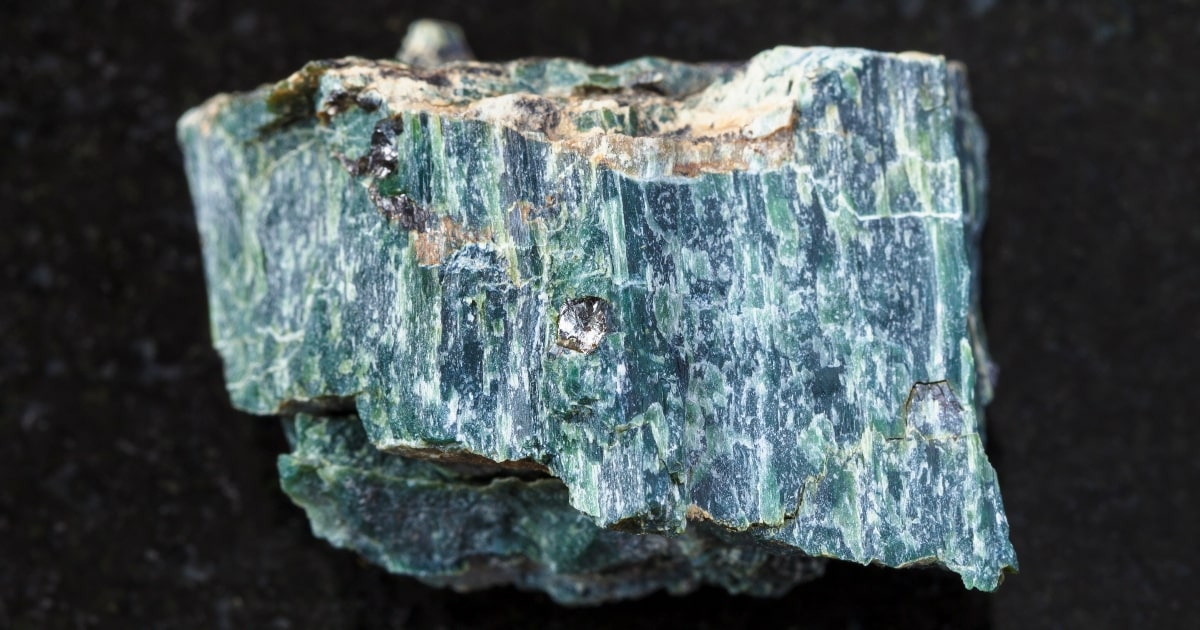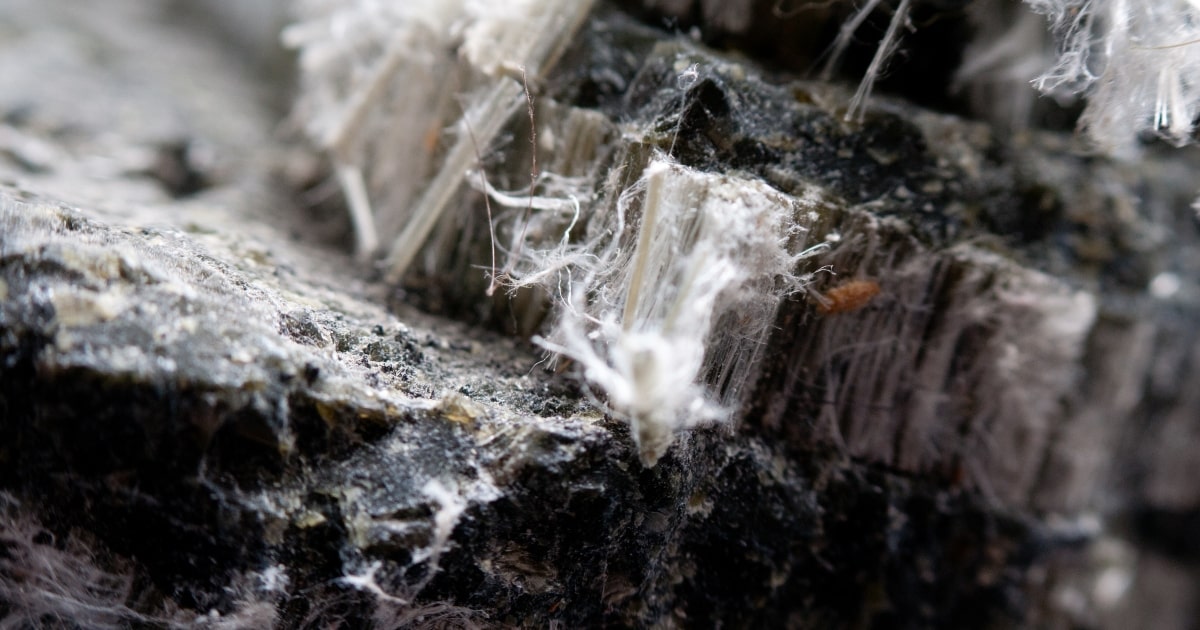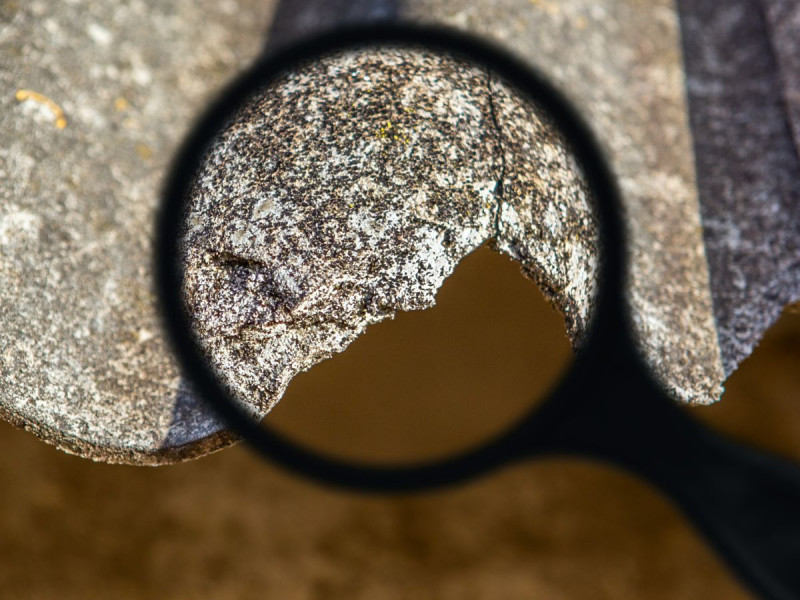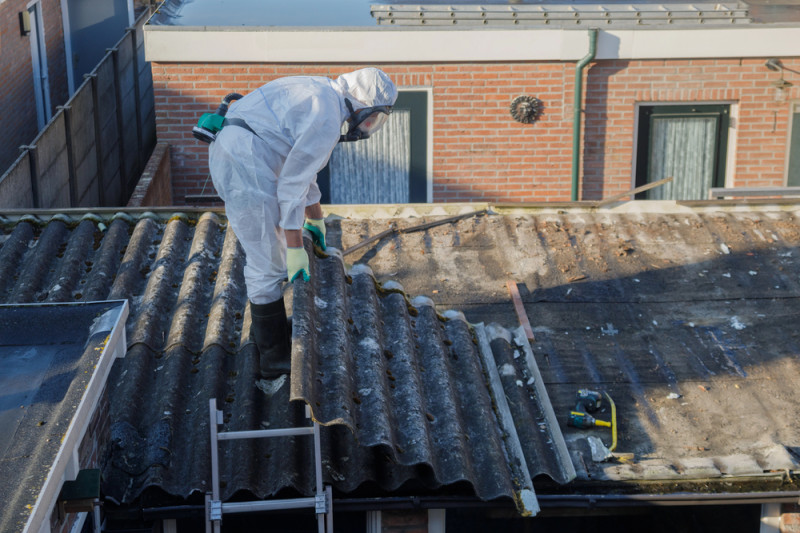You’ve probably heard about it, but what is asbestos? If you’re curious to understand more about this infamous building material and why it has such a bad rap, keep reading below to learn the truth behind asbestos and why it’s nothing to mess around with.
What is asbestos?
Wondering what asbestos is made from? The answer is naturally occurring silicate minerals.
Asbestos is the common name for a group of minerals made from flexible, heat and chemical resistant fibres, which are very long, very thin and occur in natural bundles.
Asbestos was once commonly used in various consumer products — especially housing materials — but with the discovery that inhaled or absorbed asbestos dust can be a huge health risk, asbestos-containing materials have been regulated or even banned in many countries.
Where does asbestos come from?

Asbestos is a family of six naturally occurring minerals and can be found in a variety of rock types — such as serpentine rock and metamorphic rocks — or soil in certain areas.
It can still be found naturally occurring throughout Australia’s outback. However, it was most commonly mined on the central west and eastern coast of the United States and today is still exported by Russia, China and Kazakhstan, among other countries.
Asbestos mining was prominent in the 1900s, but the product has been subjected to different regulations and is less popular today, though it is still occasionally used in manufacturing.
How is asbestos made into building materials?
Asbestos became a very popular material in the 20th century, thanks to its high heat and fire resistance, electrical insulation properties and chemical resistance. The process of creating asbestos-containing materials (ACMs) follows a few simple steps:
- An asbestos vein is located.
- Miners blast or drill away layers of earth to access the vein.
- The miners remove the rocks and asbestos from the ground.
- The ore is treated to separate the asbestos fibres for further use. If the manufacturing process uses water to control air dispersion of asbestos fibres, the fibres are crushed, screened and sizes, then formed into pellets and dried. These pellets can be shipped as is or further processed to create fibres.
- Manufacturers combine asbestos minerals with other materials, creating ACMs.
What are types of asbestos-containing materials?
In the past, ACMs could include everything from fire retardant clothing, blankets and oven gloves to building materials and automotive supplies. While asbestos bans and the passage of time have removed many asbestos containing products from everyday life, the longevity of buildings means that many homes and other properties still contain asbestos, especially if the building was constructed before the 1990s.
Some of the most common asbestos-containing materials found in residential and commercial areas include products such as:
- Cement products
- Paint
- Floor tiles
- Insulation materials
- Roof tiles
- Fencing
The presence of asbestos containing products increases your risk of asbestos exposure, especially if you’re planning on renovating or tearing down a building or if the building has sustained damage from weather, human interference, or the passage of time.
Are all asbestos containing materials dangerous?
Yes. It is important to note that all types of asbestos are dangerous — even deadly. But what makes them such a health risk, and is it possible that some ACMs are more dangerous than others?

Why asbestos is dangerous
Asbestos is a dangerous material that can break down into microscopic fibres, which can stay in the air for days. Inhaling asbestos fibres can cause irreversible damage to your lungs and lead to serious asbestos related diseases, including asbestosis, mesothelioma, and lung cancer.
Asbestos fibres are released from asbestos materials when the ACM becomes damaged or is removed. Because these fibres are invisible to the eye, it’s impossible to tell if a space is contaminated unless you have the proper tools to test the air. This makes accidental exposure very likely if you aren’t trained in asbestos removal.
Friable vs non friable asbestos
ACMs can be divided into two different categories: friable and non-friable.
Friable asbestos refers to an asbestos containing product which is damaged or becoming fragile due to wear and tear. This is the most dangerous type of ACM as it is likely already in the air being inhaled.
On the other hand, a non-friable ACM still holds its structural integrity, meaning it likely isn’t leaking airborne asbestos fibres. However, all non-friable asbestos containing products have the potential to become friable down the line if they become damaged from wear and tear or during renovation projects.
Removing an ACM before it becomes friable is essential to avoiding inhaling asbestos. It is always best to avoid all types of asbestos containing products and have them safely removed by licensed professionals to protect yourself and your family from accidental exposure.
Don’t stress about asbestos — reach out to our team today
While asbestos is banned in Australia, it continues to be an issue in pre-2003 homes and buildings, which likely contain materials made with asbestos. If you’re worried that your property contains asbestos, we can help.
At Rapid Asbestos Removals, our trained specialists are ready to help you safely remove and dispose of contaminated or potentially contaminated materials. Contact us today for more information about our sample asbestos tests or to receive a free quote for your project.
Frequently asked questions
Asbestos is made from naturally occurring silicate minerals.
Asbestos can be found in a variety of rock types such as serpentine rock and metamorphic rocks, as well as in soil in certain areas.
Yes, asbestos can still be found naturally occurring throughout Australia's outback.
Some of the most common include asbestos insulation, construction materials, cement products, paint, floor coverings, floor tiles, insulation materials, ceiling tiles, and fencing.
Yes, all types of asbestos are dangerous and can cause irreparable damage to the lungs, leading to asbestos related disease such as asbestosis, mesothelioma, and lung cancer.
It is always best to avoid all types of asbestos products and have them safely removed by licensed professionals to protect yourself and your family from being accidentally exposed to asbestos.


